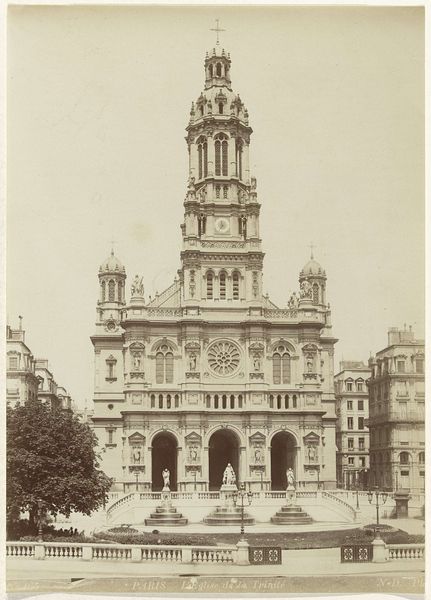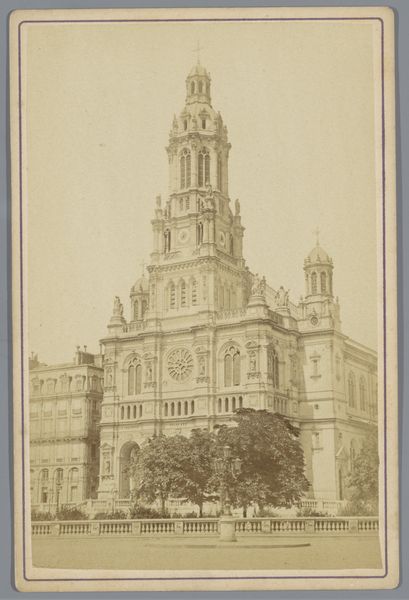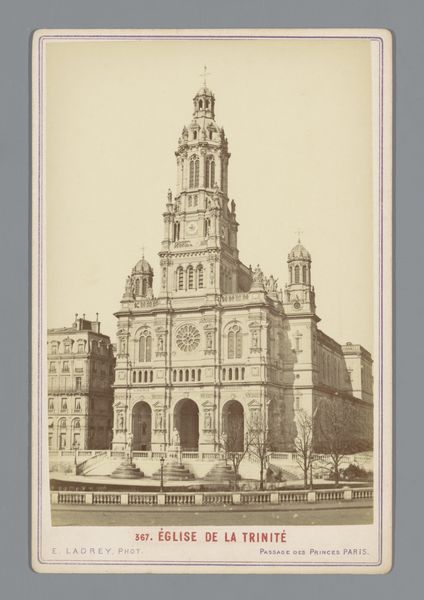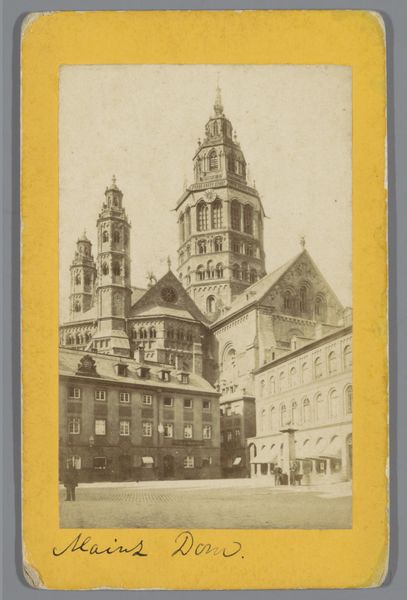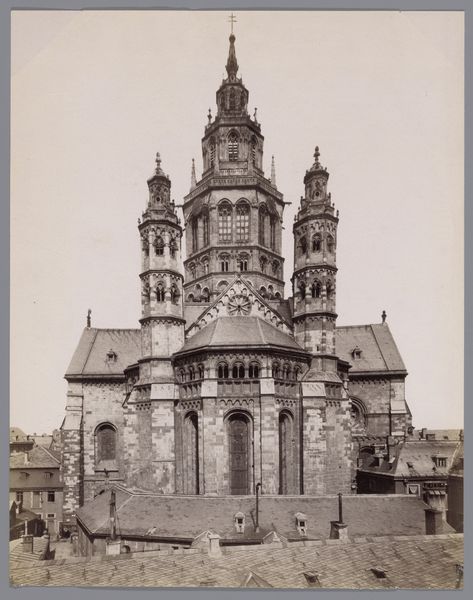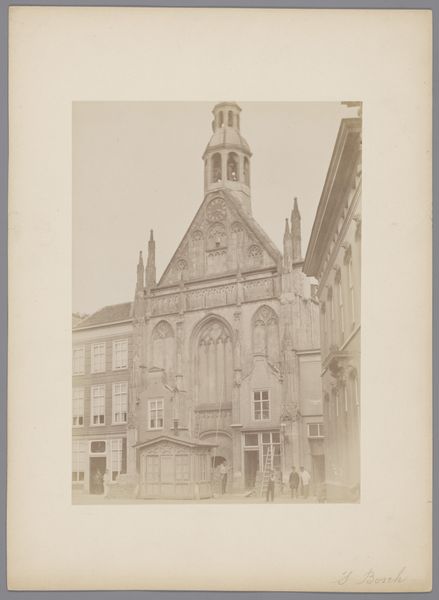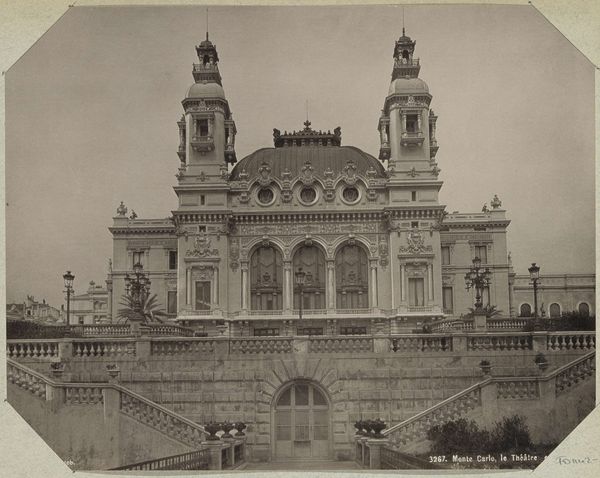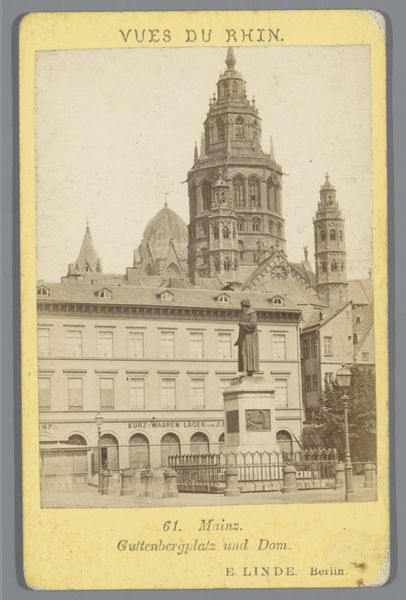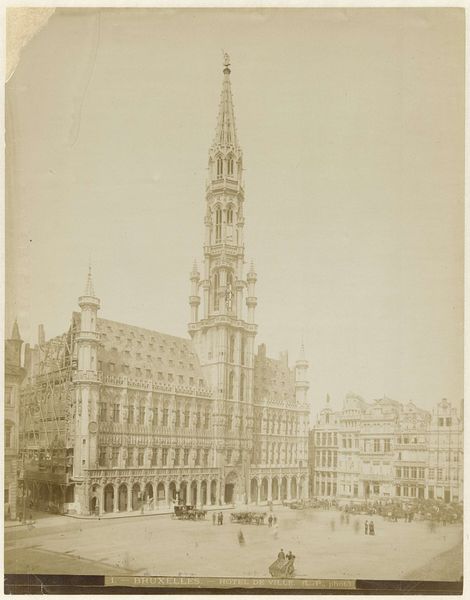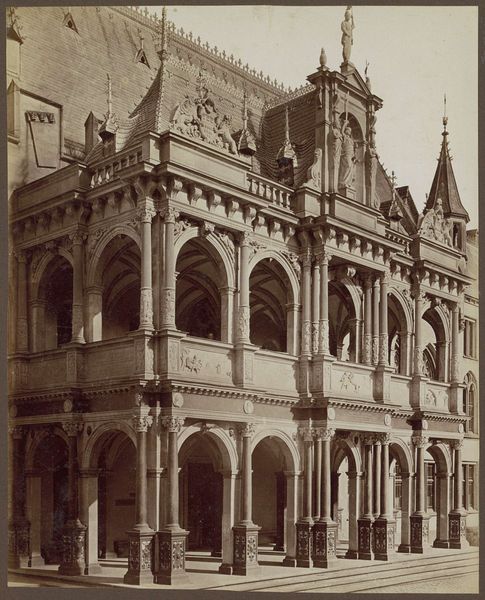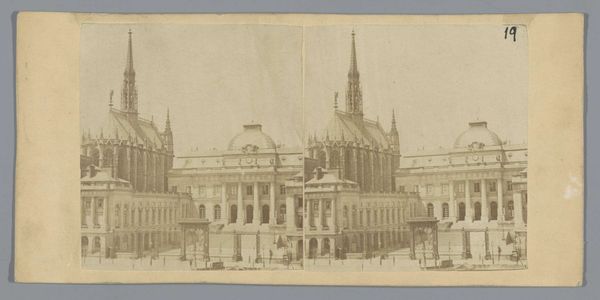
Dimensions: height 215 mm, width 154 mm, height 397 mm, width 309 mm
Copyright: Rijks Museum: Open Domain
Curator: We're looking at a photograph titled "Exterieur van de Église de la Sainte-Trinité te Parijs," captured by Albert Mansuy sometime between 1860 and 1880. The photographic print showcases a neoclassical building exterior. Editor: Gosh, the light in this is fantastic—it's got this ghostly, sepia quality that somehow manages to capture both the monumentality of the church and also make it seem fleeting, ephemeral, like a dream you're about to forget. It feels haunted by history. Curator: Indeed, the sepia tones accentuate the formal geometry of the architecture. Note how Mansuy's framing emphasizes the verticality of the church, guiding the eye upwards towards the towering spire, while establishing visual tension against the more mundane Parisian buildings to the side. The photograph's structure invites contemplation. Editor: It almost feels staged. I mean, look at the figures down at the base of the church—they're so tiny! Makes the church feel almost comically gigantic. You have the feeling Mansuy's playing with our sense of scale and the unyielding passage of time. It gives you a profound sense of stillness and grandeur...a serene sort of melancholy. Curator: Agreed. The juxtaposition of the human scale against the imposing structure of the church serves to amplify the perceived stability and permanence, contrasting the temporary human condition against the enduring power of monumental architecture, reinforcing notions of divine will as presented within Western artistic canons. Editor: But even in its permanence, it’s fragile too, no? The photograph is itself evidence of time’s passage—the slight blurring, the imperfections of an early photographic process. Makes you wonder about the photographer, what he was thinking. A prayer maybe? Curator: Precisely. Mansuy's composition masterfully exploits these temporal dichotomies, which become crystallized via its representational aesthetic and allow the photograph to engage in its own complex dialogue between history, memory, and material representation. Editor: Ultimately, it’s like peering through a keyhole into a different century. Kind of humbling, really. Curator: Well put; a poignant synthesis of temporal dynamics encoded via compositional and formal artistic modalities.
Comments
No comments
Be the first to comment and join the conversation on the ultimate creative platform.
